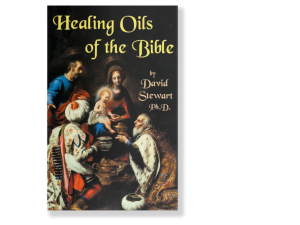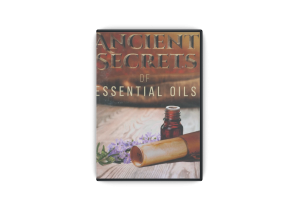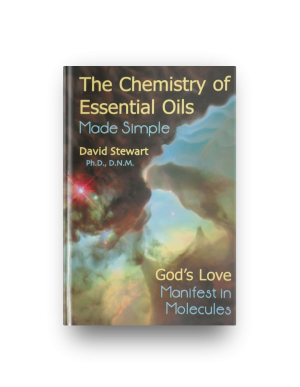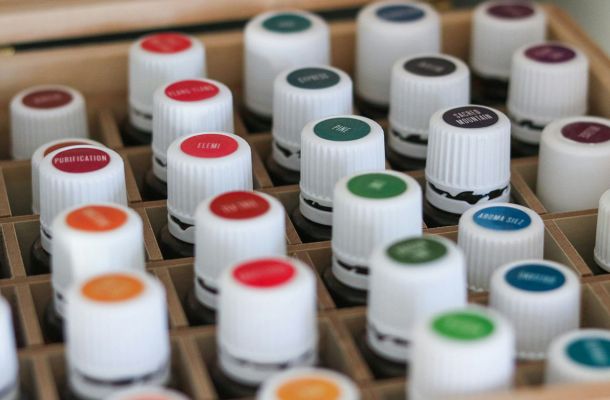The Merck Manual – Volume 2, Number 1
Please feel free to share this newsletter!

Raindrop Messenger
Official Newsletter of CARE
The Center for Aromatherapy Research and Education
12923 BCR 800, Marble Hill, Missouri USA 63764
(573) 238-4846
NOTE: The information in this newsletter is intended for education purposes only. It is not provided in order to diagnose, prescribe, or treat any disease, illness, or injured condition of the body or mind. Anyone suffering from any disease, illness, or injury should consult with a physician or other appropriate licensed health care professional.
The Merck Manual
By David Stewart, PH.D., R.A.
Originally Posted January 2004
(The following is an excerpt from Dr. Stewart’s upcoming book AROMACHEMISTRY: THE SCIENCE OF ESSENTIAL OILS MADE SIMPLE God’s Love Manifest in Molecules)
Consider these two publications published by Merck & Company, New York, NY:
Merck’s Manual of the Materia Medica, published in 1899, 192 pages. The Merck Manual of Diagnosis and Therapy, published in 1999, 2833 pages.
The intent of the Merck Manual is to describe every known disease and condition to assist doctors in making diagnoses. The two Merck Manuals listed above are a century apart in their printing. The first one published in 1899 was only 364 small pages in size while the 1999 edition is more than 2800 large pages. Does this mean we have more diseases today than they did a century ago?
While the modern version focuses on surgery, radiation, and pharmaceuticals, the19th century medical guide actually suggests prescriptions for the following eleven essential oils: bitter almond, cajuput, eucalyptus, wintergreen, juniper, mustard, mountain pine, scotch fir, rosemary, sandalwood, and thyme. It also lists castor, cod liver, and olive oils as medicines along with oil of terpentine.
Croton oil (Croton tiglium), a strong laxative, is also recommended for oral use, but with caution. According to Merck (1899), croton oil can be poisonous for which they recommend antidotes of opium or cocaine.
Today, oil of bitter almond is not used by aromatherapists because of its potentially lethal cyanide content, but it was an oil used by doctors a hundred years ago. The 1899 Merck Manual lists bitter almond oil as not only being a medicine (if properly prescribed), but also as a “poison.” As an antidote, it suggests “ammonia” or a shot of “brandy.”
Mustard oil is also not used today because its vapors can be damaging to the lungs and nasal tissues, but it was used by doctors of the 19th century. It was recommended by Merck to be compounded as a liniment for poultices or compresses “with much water.”
In all instances, the essential oils recommended by Merck are U.S.P. grade (United States Pharmacopeia) which are usually not true therapeutic grade oils with healing qualities. USP means the oils have been manipulated by refining, denaturing, rectification, or adulteration with synthetics to fit a USP standard. USP grade oils are usually produced by drug companies. Aromatherapists who heal do not consider them to be therapeutic.
The Merck Manual of Diagnosis and Therapy is the book used by physicians everywhere to diagnose and prescribe. It contains a description of every disease and condition known to mankind as of its printing (1999) and has been revised, updated, and expanded seventeen times since its first printing in 1899. It is not legal to diagnose anyone else outside of your own immediate family unless you are licensed to do so, but this is a useful text to have in the home in order to self- diagnose or to corroborate or understand a doctor’s pronouncements, prescriptions, and prognoses. The latest edition of the Merck Manual does not recommend essential oils at all.
Merck Freaks Out Over Wintergreen
The only mention of essential oils in the 1999 Merck Manual is in the section entitled “Aspirin and Salicylate Poisoning.” Doctors call this type of poisoning, “Salicylism.” Chemically, aspirin is acetyl salicylic acid (C9H8O4). In over a century of its use, aspirin has been the cause of many deaths and visits to emergency rooms.
Natural oil of wintergreen consists of approximately 85-90% methyl salicylate (C8H8O3). You can see by the two formulas how similar the oil is to aspirin, at least superficially. The two molecules differ only by one atom of carbon (C) and one of oxygen (O), with the number of hydrogens (H) being the same in both.
For therapeutic purposes, wintergreen oil acts in a way that is similar to aspirin in that it is an excellent analgesic for pain relief when applied topically directly to the skin where it hurts. Used in this way, natural wintergreen oil is quite safe. Merck would disagree.
The 1999 Merck Manual states the following on page 2273: “The most toxic form of salicylate is oil of wintergreen (methyl salicylate); death has been reported from ingestion of less than a teaspoon in a young child. Any exposure to methyl salicylate (found in liniments and in solutions used in hot vaporizers) is potentially lethal.”
Apparently, Merck has changed its mind about wintergreen oil since its 1899 edition. At that time the “recommended dosage was: “5-20 minums of a 5% spirit.” Translated into modern language, this means 5-20 drops of a 5% tincture (alcohol solution) of wintergreen oil. The 1899 edition issues no warnings and mentions no untoward effects whatsoever.
“What’s going on here?” you are thinking. “How can wintergreen oil be safe when today’s medical profession says it is potentially lethal even when applied in simple ointments or when inhaled from a vaporizer.”
The answer to this is in the chemistry. When the literature doctors read talks about essential oils, it is only talking about USP grade oils, which, as they exist today, are not therapeutic in nature and which can be toxic and harmful. In particular, when allopathic writers refer to “oil of wintergreen” they are not talking about the oil as it is distilled from the plant, they are talking about synthetically produced methyl salicylate. Pure methyl salicylate.
Natural oil of wintergreen that has been properly distilled, unrefined, and untampered with is only 80-90% methyl salicylate. The other 10-20% of natural ingredients changes everything. While pure methyl salicylate from a laboratory is toxic, methyl salicylate produced by a plant such as wintergreen (Gaulthria procumbens) or birch (Betula alleghaniensis) is safe. This is not only because the natural methyl salicylate accompanied by companion compounds that work together to create a safe therapeutic oil, but the methyl salicylate from a lab is not even the same mix of isomers as the natural version.
Isomers are compounds with exactly the same formula (C8H8O3 in this example), but with different molecular shapes. (You can take the same assortment of C, H and O atoms and put them together many ways.) Laboratories do not know how to make methyl salicylate in the same isomeric mix as nature. Different isomers of the same compound can have entirely contrasting properties from extremes of helpful to harmful. So there is good methyl salicylate and bad methyl salicylate. (We will talk a lot more about isomers in the next chapter.)
Hence, the allopathic version of “oil of wintergreen,” referred to by the 1999 Merck Manual is unnatural and toxic and should be considered dangrous, as they say. But what they say has nothing to do with natural wintergreen which has been used quite safely hundreds of thousands of times in raindrop technique as well as in other simple applications, like on-site relief of arthritis pain.
The earlier 1899 edition of Merck, that recommends wintergreen oil, was probably referring to a natural distillate with minimal manipulation. 100 years ago, USP some USP grade oils were relatively pure and effective. However, the 1999 edition is talking about a pure synthetic product, which is potentially “lethal,” as it says.
It is references such as the recent editions of the Merck Manual that some British aromatherapists and some members of the American National Association of Holistic Aromatherapists cite as their basis for objecting to wintergreen and its use in raindrop technique.
What this points out is that just because something is published in what seems to be a reputable scientific resource, does not mean that it is true. In fact, when it comes to reading the literature of scientific medicine, one has to be extremely discriminating not to be misguided into many untruths. Medical research literature is rampant with erroneous, misleading, and self-serving information because most of it is financed by commercial interests (i.e. drug companies) rather than seekers of true healing. With this in mind, consider that Merck & Company is not just a publisher of medical manuals. It is a drug company. One of the world’s largest.
Now you can understand why most MDs do not approve of or appreciate essential oils. Their training is against it, from medical school all the way through to the references they daily use. They have been propagandized and manipulated and don’t know it. And now you know why I call the “Merck Manual” the “Murky Manual,” because it isn’t clear in that book what is true and what is not true.
THE RAINDROP MESSENGER
Official Newsletter of CARE
The Center for Aromatherapy Research and Education
12923 BCR 800, Marble Hill, Missouri USA 63764
(573) 238-4846
NOTE: The information in this newsletter is intended for education purposes only. It is not provided in order to diagnose, prescribe, or treat any disease, illness, or injured condition of the body or mind. Anyone suffering from any disease, illness, or injury should consult with a physician or other appropriate licensed health care professional.
The Care Calendar
Topics covered in the Raindrop Messenger:
- 10 Reasons to Learn Raindrop
- 3 1/2 Day Intensive
- 3 Day Intensive
- Acid Reflux
- Advanced Bible Oils
- Advanced Chemistry of Essential Oils
- Advanced Emotional Release
- AFNOR
- Allergy Season
- Allopathy
- ALOES/SANDALWOOD
- and Emotional Release
- Annual CCI Summit
- Anointing
- Anointing with Oil & Laying on of Hands
- Applied Vitaflex
- Aroma Life
- Aromatherapist
- Aromatherapy
- Aromatherapy Certification
- Arthritis
- Believer
- BIBLE OILS
- Biblical Oils
- Birch Oil
- Black Widow
- Blue Chamomile
- Blue Spruce
- Body Systems
- cancer
- CARE Chemistry
- CARE Classes
- CARE Instructors
- CARE INTENSIVES
- CARE Seminars
- CARE Summit 2025
- CARE training
- Carvacrol
- CCI Certification
- CCI Summit
- CCI Summit 2024
- CEDARWOOD
- Center for Aromatherapy Research and Education
- Chakras
- Charging for Raindrop
- Chemistry
- Chemistry 1&2
- Chemistry of Essential Oils
- Chemistry of Essential Oils Made Simple
- Chemotypes
- cleanses
- Clover
- Connection
- Continuing Education Credit
- CYPRESS
- Dangers Of Prescription Drugs
- Detoxifiers
- Developing Gratitude
- DI GIZE
- DIAMOND
- Do All You Can
- Earthquakes
- Education
- Elderberry
- ELECTROMAGNETIC FIELD
- EM FIELD
- Emotional Release
- Emotional Release with Oils
- Energize
- ENZYMES
- Essential Oils
- ESSENTIAL OILS FOR INTUITIVE PURPOSES
- Essiac tea
- Exodus Supplement
- Feelings Kit
- Flu
- Focus
- Frankincense
- FREQUENCES
- Full CARE Intensive: Raindrop
- GALBANUM
- Garlic
- Gary Young
- German Chamomile
- Ginger
- Goals
- god's love
- Gold Frankincense Myrrh
- Grand Fir
- Grapefruit
- Growth
- Habits
- Harmonies Melodies & Symphonies with Essential Oils
- Heal Your Body
- Healing
- Healing Oils Of The Bible
- Helichrysum
- HERXING
- History of Anointing Oils
- Holy Anointing Oil
- Holy Incense
- Homeopathy
- Homeostatic Intelligence
- HYSSOP
- IASP
- Institute for Energy Wellness Studies
- Integrated Aromatic Science Practitioner
- Joy
- Juniper
- laughter
- Lavender
- Lee Stewart
- Legal
- lemongrass
- linen
- Liver
- Look Ahead.
- Love
- Lyme Disease
- Mind-Body Connection
- Mint
- Myrrh
- Myrtle Oil
- NAT
- Natural
- Natural Molecules
- Neuro-Auricular Technique
- never give up
- new age
- Ningxia
- Ningxia Red
- Non-Nutritive
- Nova Vita
- Ocotea Oil
- Onycha
- ORAC SCALE
- Oregano
- Oregano oil
- Overcoming Diabetes
- patchouly
- Peruvian Chocolate
- Pest Control
- pheromones
- phosphoric acid
- Photoxicity
- Pine
- POO-ROMATHERAPY
- Practitioner
- Preparation
- Protocel
- Pure Therapeutic Grade Essential Oil
- Quantum Physics
- Raindrop
- Raindrop and Vitaflex Techniques
- Raindrop certification
- Raindrop instructors
- Raindrop Technique
- Raindrop Technique Training
- Raindrop Training
- Raindrop Without a License
- RC Blend
- Relationship
- ringing in the ears
- Rose Essential Oil
- ROSE OF SHARON/CISTUS
- Rose Oil
- Safe Insect Repellants
- scar-b-gone
- Science Of Essential Oils Made Simple
- Sensitivities to Essential Oils
- sick building syndrome
- SPIKENARD
- Stay Positive
- staying healthy
- Success
- Supervisor Training
- Synthetic Compounds
- tansy
- Tea Tree
- The Blood Brain Barrier
- the Ecuador Clinic
- THE FIRST IMPRESSION TECHNIQUE
- the Mind-Body Connection
- THE PRAYER OF JABEZ
- The Quantum Connection
- THE SLEEP TECHNIQUE
- Therapeutic Grade
- Thieves Household Cleaner
- Thieves Oil
- Thyme
- Thyme Oil
- Tinnitus
- Transformation
- Transformation Oil Blend
- Twelve Questions to Ask Those Who Invite You to Join Another Company
- unresolved emotions
- valor blend
- Vita Flex
- Vitaflex
- Vitaflex and Raindrop
- water
- Wealth and Spirituality
- Wintergreen
- Wolfberries
- Ylang Ylang
- YLEO
- Young Living business
- Young Living Essential Oils
- Young Living Oils and Products





